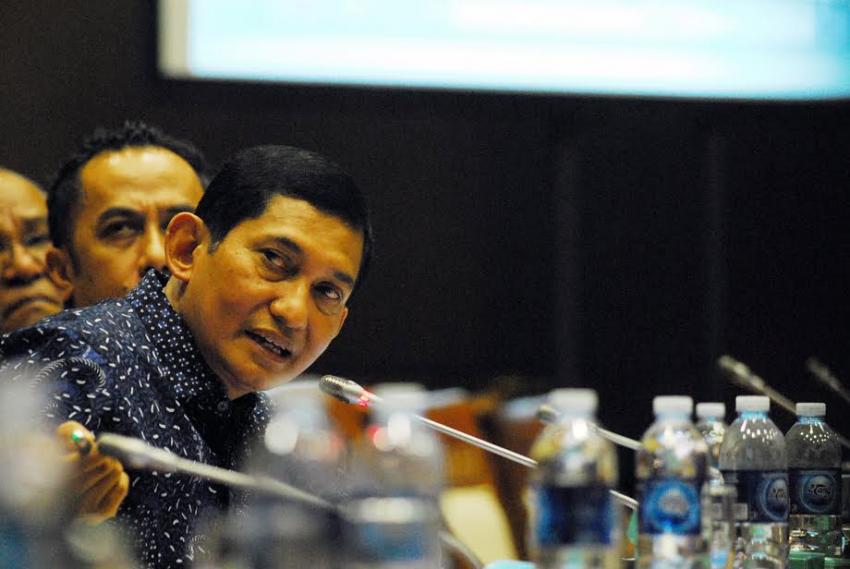
In recent discussions, a Southeast Asian nation has been weighing significant alterations to its mineral trade policies, particularly regarding the unprocessed forms of precious natural resources. This deliberation brings to light numerous considerations that may reshape not only the domestic landscape but also the interconnected web of supply chains and economic dynamics across various continents.
Such a decision could resonate far beyond the borders of the originating country, influencing prices and availability of key materials that are fundamental to numerous industries worldwide. As stakeholders observe these developments, the ripple effects may be felt in technology, construction, and other sectors reliant on these essential elements.
The ramifications of potential trade restrictions raise crucial questions about the balance between national interests and international obligations. As countries strive for economic growth and sustainability, navigating the complexities of resource management while addressing the needs of the global community will be a fundamental challenge moving forward.
Indonesia’s Copper Ore Export Policy Shift
The recent decision to revise export practices related to a valuable mineral resource has generated significant discussion among industry experts and economic analysts. This shift aims to reshape the dynamics of resource management and enhance the nation’s export strategies. Such changes could not only redefine local industry standards but also affect intercontinental trade relationships.
Over the years, the country has relied heavily on the export of this essential natural resource, contributing to its economic growth. As regulatory measures tighten, various stakeholders are closely monitoring the potential repercussions both domestically and in foreign markets that depend on this supply.
|
Aspect |
Details |
|---|---|
|
Resource Utilization |
Focus on domestic processing and manufacturing |
|
Economic Implications |
Potential increase in local job creation |
|
Trade Relationships |
Possible strain on existing agreements with importing nations |
|
Environmental Concerns |
Greater emphasis on sustainable mining practices |
As the new policies begin to take shape, it is crucial for involved parties to assess their strategies to navigate these shifts effectively. The evolving landscape presents both challenges and opportunities in harnessing natural resources responsibly while meeting international demand.
Potential Global Supply Chain Disruptions
The recent discussions around trade policies in a certain Southeast Asian nation have raised concerns about possible interruptions in logistics networks. This could lead to significant shifts in various industries that rely on essential materials for production and development.
Industry Vulnerabilities
Many sectors could experience challenges due to the reliance on specific exports. Here are some key industries that may be affected:
-
Electronics manufacturing
-
Construction and infrastructure projects
-
Energy sector and renewable resources
-
Automobile production
Consequences on Prices and Availability
Any disruption in supply can lead to price fluctuations and material shortages. The following outcomes are likely to occur:
-
Increased production costs for manufacturers.
-
Delays in project timelines across various sectors.
-
Potential for inflation in consumer goods resulting from scarcity.
-
Shift in sourcing strategies as companies seek alternatives.
Such developments demonstrate the interconnectedness of modern supply chains and how localized decisions can echo throughout the world economy. Companies must remain vigilant and adaptable to navigate these potential challenges effectively.
Economic Implications for Indonesian Producers
The potential changes in trade policies could significantly reshape the economic landscape for local producers in the mineral sector. By altering export dynamics, various stakeholders might face both opportunities and challenges that could influence their operational models and financial performance.
Local Industries may experience reduced revenue streams if the availability of foreign markets diminishes. This situation could lead to an oversupply within domestic channels, forcing prices down and potentially affecting profitability. Conversely, domestic demand might rise, presenting an opportunity for manufacturers to engage more vigorously with local consumers and industries.
Job Market Dynamics could also shift, as changes in production levels may result in a reevaluation of labor needs. If overseas sales decrease, companies may have to consider scaling back their workforce, impacting local employment rates. However, a focus on domestic production might also generate new job opportunities in other areas of the supply chain.
The potential for investment shifts is another critical factor. Investors might reconsider their interests in the region, depending on the direction of resource policy. If local initiatives foster sustainability and innovation, it could attract new funding sources, bolstering development within the sector.
Ultimately, staying agile and adapting to evolving conditions will be essential for local entities to navigate the changing economic environment effectively. Establishing strong partnerships and enhancing production capabilities could provide a sustainable path forward amidst uncertainty.
Impact on International Copper Prices
The potential halt of significant mineral shipments from a key producing region poses serious ramifications for pricing trends in the global metal industry. When supply chains are disrupted, market stability is threatened, leading to fluctuations in value that can affect a wide array of industries relying on these essential materials.
Supply Dynamics
When a major source of raw material is withdrawn from circulation, the immediate effect can be a tightening of available resources. This scarcity can lead to increased costs, as buyers compete for limited quantities, thereby driving prices upwards. Companies that depend on these materials for production may find their operational expenses rising, prompting them to adjust their pricing strategies.
Market Reactions
Financial markets are highly responsive to changes in supply and demand dynamics. Investors often react swiftly to news about potential limitations in resource availability. Such reactions can lead to volatility within trading platforms, where speculators may drive prices further based on anticipated shortages. The ripple effect could not only alter short-term price points but also establish new benchmarks for future trading sessions.
|
Market Aspect |
Potential Outcome |
|---|---|
|
Resource Scarcity |
Price Increase |
|
Investor Sentiment |
Market Volatility |
|
Operational Costs |
Higher Product Pricing |
Responses from Major Mining Companies
The announcement regarding the cessation of particular mineral shipments has elicited a range of reactions from leading mining corporations. These companies are assessing their strategies and potential adjustments in light of the supply chain implications that may emerge from such a move. Understanding the sentiments of these key players is crucial for anticipating shifts in production and pricing dynamics in the sector.
|
Company |
Response Summary |
Strategic Actions |
|---|---|---|
|
Company A |
Expressed concerns over supply shortages and pricing volatility. |
Considering diversifying sourcing strategies. |
|
Company B |
Reiterated commitment to sustainable practices while evaluating operational adjustments. |
Exploring alternative markets and partnerships. |
|
Company C |
Highlighted potential operational disruptions and planned contingency measures. |
Increasing production in unaffected regions. |
As the situation develops, it is anticipated that further statements from these organizations will clarify their positions and adaptations in response to the shifting landscape. The outcomes of their strategic decisions will significantly influence industry trends and consumer behaviors moving forward.
Long-term Outlook for Global Markets
The ongoing shifts in the supply chain dynamics of raw materials can significantly influence the trajectory of international trade and economic growth. As nations reassess their strategies and resource management approaches, the interdependence of economies becomes increasingly evident. Understanding the long-term ramifications of these decisions is crucial for forecasting future trends in various industries.
Many analysts believe that a prioritization of domestic production could lead to a tightening of supplies in the short term, which may drive prices upward. This rise may affect manufacturing sectors reliant on these materials, while potentially energizing local markets that focus on alternative sourcing solutions. Investors might need to adapt their strategies to accommodate a landscape marked by volatility and rapid changes.
Moreover, the transition towards sustainability is likely to play a pivotal role in shaping demand patterns. As more industries seek to reduce their carbon footprint, the focus on innovative technologies and recycling initiatives may alter the competitive dynamics for raw goods. Companies that embrace sustainable practices could find themselves at a striking advantage in this evolving environment.
In summary, the long-term outlook presents both challenges and opportunities. Firms must remain vigilant and agile, harnessing data and market intelligence to navigate this intricate landscape. The ability to anticipate shifts and embrace new paradigms will be essential for sustaining growth in an age of uncertainty.
Q&A: Indonesia mulls halting copper ore exports
What are the main reasons behind Indonesia’s consideration to stop copper ore exports?
Indonesia’s government is considering halting copper ore exports primarily to boost the domestic mining industry and encourage investment in refining capabilities. By stopping exports of raw materials, the government aims to increase local processing and create value-added products, which can enhance the country’s economy, create jobs, and reduce dependency on foreign imports. Furthermore, there are concerns over environmental impacts and the desire to optimize resource management sustainably.
How would stopping copper ore exports affect global copper prices?
If Indonesia, one of the largest copper ore exporters, decides to stop its exports, it could significantly impact global copper prices. A reduction in supply from a major player in the market would likely lead to price increases due to basic economic principles of supply and demand. This action might also create volatility in the copper market, amplifying uncertainty among investors and industries reliant on copper for production, such as construction and electronics.
What implications could this decision have for the mining industry within Indonesia?
The potential halt of copper ore exports could have mixed implications for Indonesia’s mining industry. On one hand, it could stimulate domestic investments in refining technologies and infrastructure, leading to job creation and increased local processing capabilities. On the other hand, it might discourage foreign investment in the short term, as companies might be hesitant to invest in an environment with suddenly restricted access to critical raw materials. This could initially disrupt operations and economic stability within the sector until new systems are developed.
What are the perspectives of international stakeholders regarding Indonesia’s potential export ban?
International stakeholders, including mining companies and import-dependent nations, are likely to have varied perspectives on Indonesia’s proposed export ban. Many investors might express concerns over supply chain disruptions and increased costs, potentially pressuring governments to negotiate alternative solutions. Additionally, countries that rely heavily on Indonesian copper may seek to diversify their sources. Conversely, some stakeholders might view the ban positively as an opportunity for Indonesia to lead in sustainable mining and processing practices, setting a global precedent for resource management.
Are there any historical precedents for Indonesia imposing similar export bans on other commodities?
Yes, Indonesia has a history of imposing export bans on other commodities. A notable example occurred in 2014 with nickel ore, where the government implemented a ban on unprocessed mineral exports to push for domestic processing. This decision led to significant developments in the local processing industry but also sparked tensions with foreign companies and affected global nickel prices. Such historical precedents highlight the delicate balance Indonesia aims to maintain between economic development and its relationships with international trade partners.
How does the Indonesian government plan to manage copper concentrate exports starting in 2024?
Starting in 2024, the Indonesian government, under President Joko Widodo, plans to halt the export of unprocessed copper ores to encourage domestic processing. This move is part of the country’s industrialization push to add value to its raw minerals. The government aims to process all its copper concentrates into refined copper within Indonesia, thereby attracting investment and boosting the domestic economy.
What impact did the ban on nickel ore exports in 2022 have on Indonesia’s industrial sector?
The ban on nickel ore exports in 2022 significantly impacted Indonesia’s industrial sector by driving the development of domestic processing facilities. This policy, initiated by President Joko Widodo, was designed to enhance the country’s industrialization efforts and increase the added value of its raw materials. As a result, Indonesia has seen increased investment in smelters and other processing plants, particularly those related to the production of materials for electric vehicles, which rely heavily on nickel.
Why is Indonesia considering a ban on copper exports in 2024?
Indonesia is considering a ban on copper exports in 2024 to encourage domestic processing of raw materials, as stated by President Joko Widodo. The Indonesian government aims to increase the value added to its natural resources by ensuring that raw copper and other minerals are processed within the country. This strategy is part of a broader effort to industrialize the economy, attract foreign investment, and reduce dependence on raw mineral exports.
How does the Indonesian government’s plan to halt the export of unprocessed copper ores align with its broader economic goals?
The Indonesian government’s plan to halt the export of unprocessed copper ores aligns with its broader economic goals of industrialization and adding value to its natural resources. By processing copper concentrates domestically, Indonesia aims to develop its industrial base, attract foreign investment, and create jobs. This move, supported by President Joko Widodo, is part of a larger strategy to transition from a resource-based economy to one focused on manufacturing and higher-value exports.
What are the implications of Indonesia’s ban on tin and copper exports for global markets?
Indonesia’s potential ban on tin and copper exports in 2024 could have significant implications for global markets. As a major producer of these minerals, Indonesia’s decision, driven by President Joko Widodo’s push for domestic processing, could lead to supply shortages and increased prices on the international market. The policy is intended to boost Indonesia’s domestic economy by encouraging investment in local processing facilities and ensuring that more of the value from its natural resources is retained within the country.





